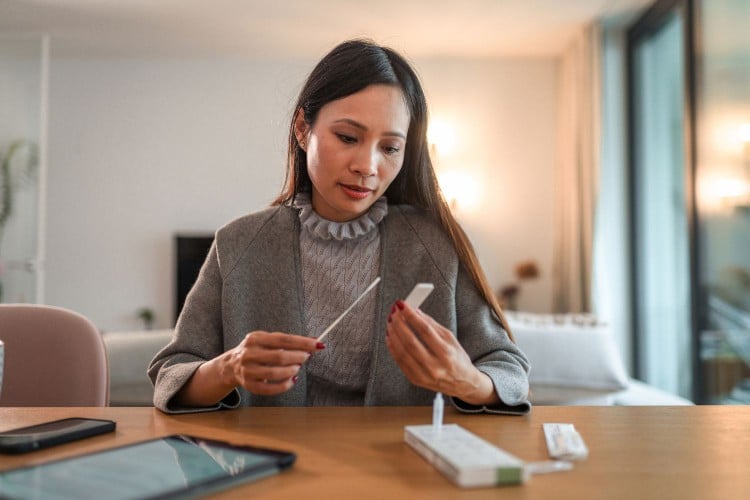- New research shows resistance training—also called strength training or sometimes weight lifting—may help counteract skin aging.
- Previous research has already shown that aerobic exercise can also help improve skin—but weight lifting might provide additional benefits.
- To potentially reap the benefits, experts say people should add both resistance training and cardiovascular work to their exercise program.

Mattia/Stocksy
Lifting weights can keep you fit and improve everything from bone health to cognitive function. Now, new research shows it may also enhance your skin's appearance.
The study, published recently in the journal Scientific Reports, showed that resistance training (also called strength training) may enhance skin health even more so than aerobic exercise.
Previous research has already suggested that aerobic exercise can improve the dermis, the layer of skin beneath the outer epidermis. For the new research, lead study author Satoshi Fujita, PhD, an exercise scientist at Ritsumeikan University in Kyoto, Japan, wanted to examine whether resistance training would have the same effect.
How Exercise Impacts Skin
Fujita's team recruited 56 sedentary middle-aged Japanese women to participate in the study. Researchers instructed half of the participants to ride a bike for 30 minutes twice a week for 16 weeks. The rest lifted weights for the same amount of time.
The scientists analyzed participant skin cells in a lab before the study and after it had finished.
Researchers found that both exercises boosted the skin’s elasticity, which is its ability to bounce back into shape after being stretched. Both cycling and weightlifting also bolstered the expression of collagen-producing genes. They also increased the dermis’s extracellular matrix, the collagen and elastic fibers network that deteriorates from aging and other factors such as sun exposure.
But the researchers found one key difference between the two groups: Women who pumped iron thickened their dermal layer, while those who cycled did not. Fujita said a thickened dermal layer can result in less sagging, fewer pigmented spots, and an overall more youthful look.
“Our results suggested that resistance exercise had more positive effect on the skin than aerobic exercise,” Fujita told Health.
Scientists still don’t fully understand how exercise contributes to skin improvement, but Fujita said that blood inflammatory factors that decrease from exercise may play a role.
A 2015 study also found that aerobic exercise boosted protein interleukin-15 (IL-15) levels, which can help spur the synthesis of the skin’s mitochondria, the part of cells that powers them up. Research has shown that aging, sun exposure, and pollution can damage mitochondria in skin cells.
Skincare Enthusiasts Claim Skin Smoothies Make Your Face Glow—Dermatologists Weigh In
Lingering Questions About Exercise's Effect on Skin
Fujita believes that resistance exercise can potentially rejuvenate facial appearance, but his team examined only the skin’s inner layer.
“We don’t know for sure that this change in the dermis would cause visible skin benefits,” Rajani Katta, MD, a professor at Baylor College of Medicine who wasn’t involved in the research, told Health.
A more extended trial would be necessary to see how weightlifting affects the appearance of outer skin, added Fujita.
We also don’t know if the benefits would disappear once you stop your weightlifting routine, Katta pointed out. “In other words," she said, "it’s possible that these benefits are temporary.”
Anti-Aging Benefits of Collagen
Working Out for Skin Health
While you’re likely to boost skin health by focusing on cardio, Fujita said adding resistance training to your routine may give you even better results.
“This study confirms that we should all be doing a mix of aerobic exercise and resistance training if we want to improve our skin,” Lauren Eckert Ploch, MD, a dermatologist serving Georgia and South Carolina, told Health.
As for which muscles to target, Dr. Ploch said the study shows it shouldn’t matter.
“The anti-aging factors that were increased by exercise circulate through our bloodstream, so the benefits are not localized to one area near that muscle group,” she explained.
But she said that just because you work out doesn’t mean that you should ignore things that damage your skin, like smoking and sun exposure.
“The beneficial effects of exercise do not cancel out other harmful actions for our skin,” she said.








